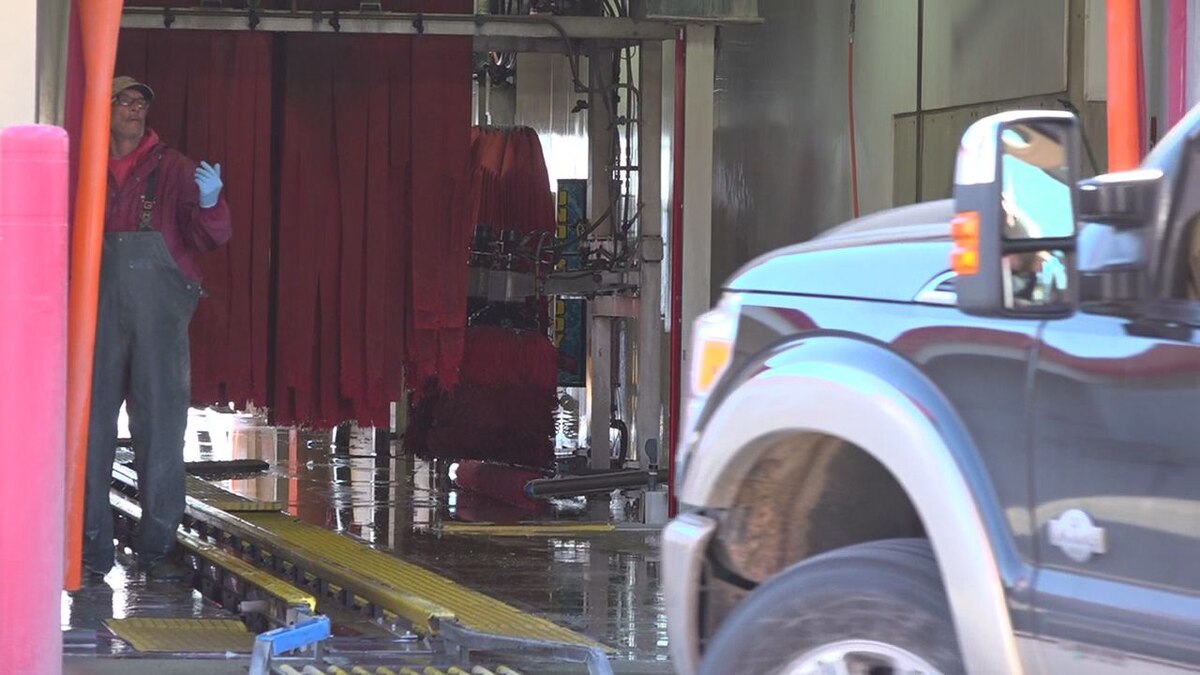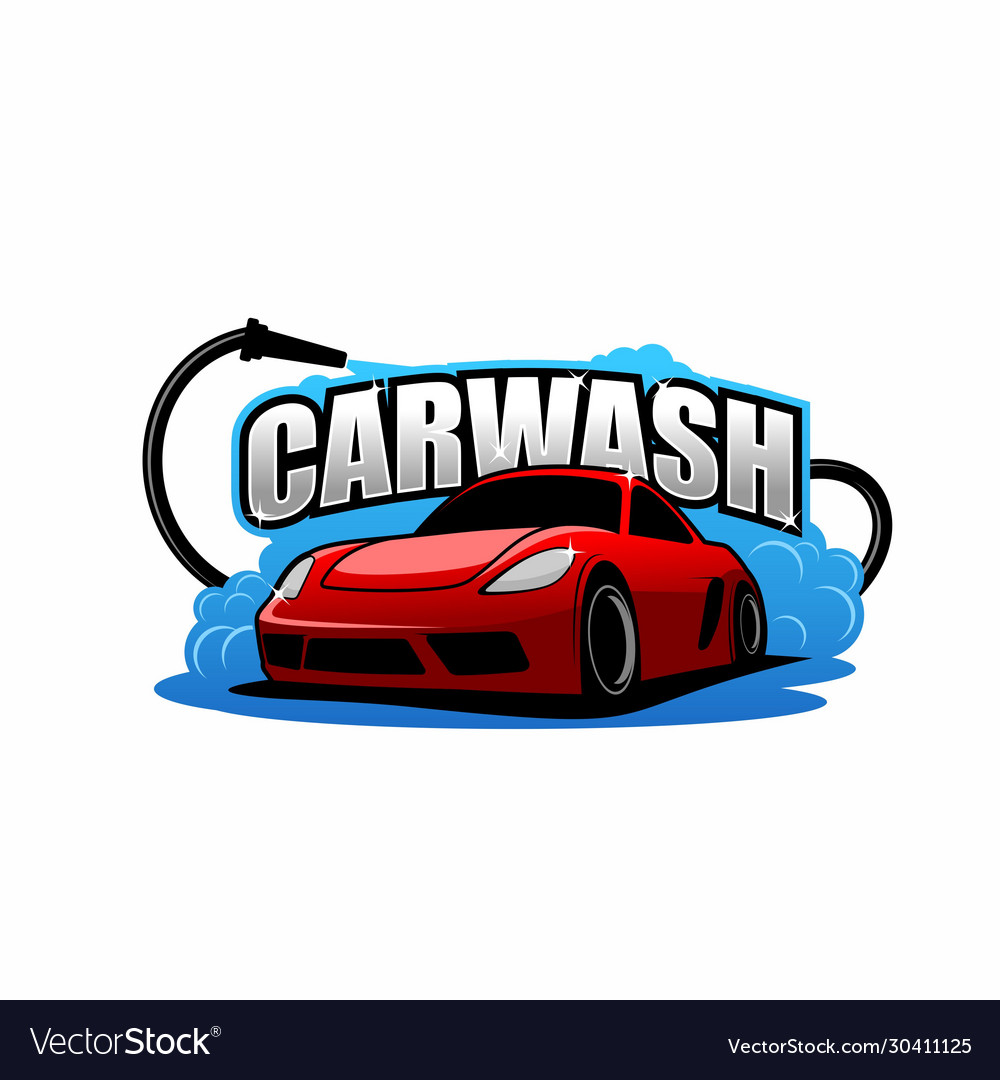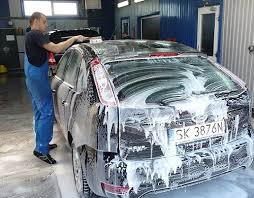
In a world increasingly focused on safety and hygiene, businesses are stepping up to ensure the well-being of their customers and employees. From enhanced cleaning protocols to innovative service delivery methods, the commitment to creating a safe environment is paramount. This dedication is especially evident in service-oriented industries, where direct interaction is frequent and personal.
The need for a clean and sanitary environment extends to all aspects of our lives. Whether it’s the grocery store we frequent, the restaurant we enjoy, or even the car wash we visit, we expect businesses to prioritize our health and safety. This expectation has only intensified in recent times, making it crucial for establishments to adapt and implement measures that instill confidence and peace of mind.
For many, a car wash is more than just a place to clean their vehicle; it’s an investment in maintaining its appearance and value. Knowing that the car wash is also committed to their safety and the safety of its employees provides an added layer of comfort and assurance. This dual focus on cleanliness and safety has become a key differentiator for businesses looking to build trust and loyalty.
The dedication to safety extends beyond the simple act of cleaning a car. It encompasses a comprehensive approach that includes employee training, the use of effective cleaning agents, and the implementation of protocols that minimize risk. This holistic approach demonstrates a genuine commitment to creating a safe and healthy environment for everyone involved.
That commitment is particularly obvious when we examine how **Parkway Car Wash continues to protect its customers and staff**.
Enhanced Cleaning Protocols
Disinfecting High-Touch Surfaces
One of the most important aspects of protecting customers and staff is maintaining a consistently clean environment. This means regularly disinfecting high-touch surfaces throughout the car wash facility. Door handles, payment kiosks, seating areas, and even the car wash bay controls should be frequently wiped down with effective disinfectants. This proactive approach helps to minimize the spread of germs and creates a safer experience for everyone.
The frequency of cleaning is also critical. High-traffic areas should be disinfected multiple times a day, while less frequently used surfaces can be cleaned less often. However, it’s important to maintain a consistent schedule to ensure that all areas are regularly addressed. Using a log or checklist can help staff keep track of cleaning times and ensure that no area is overlooked.
Choosing the right disinfectants is also essential. Opt for products that are effective against a broad spectrum of germs and viruses but are also safe for use around people and vehicles. Follow the manufacturer’s instructions carefully to ensure that the disinfectant is used correctly and effectively. It’s also important to provide proper ventilation during cleaning to avoid any respiratory irritation.
Beyond routine cleaning, consider implementing additional measures such as using antimicrobial coatings on surfaces that are frequently touched. These coatings can provide an extra layer of protection by continuously inhibiting the growth of bacteria and viruses. While not a replacement for regular cleaning, they can offer an added level of assurance.
Finally, transparent communication with customers about the cleaning protocols in place can help build trust and confidence. Clearly display signage outlining the steps being taken to maintain a clean environment, and encourage customers to report any concerns or suggestions. This open communication fosters a sense of partnership and reinforces the commitment to safety.
Sanitizing Car Wash Equipment
It’s not just the physical spaces that need to be sanitized; the car wash equipment itself requires regular cleaning and disinfection. This includes brushes, spray nozzles, and any other components that come into contact with vehicles. Bacteria and other contaminants can easily accumulate on these surfaces, so proper sanitation is essential to prevent the spread of germs.
The cleaning process should involve removing any debris or buildup from the equipment, followed by a thorough disinfection with an appropriate cleaning solution. Consider using a pressure washer with a disinfectant attachment to ensure that all surfaces are properly cleaned. Allow the equipment to air dry completely before using it again.
Regularly inspect the equipment for signs of wear and tear, and replace any damaged or worn parts. Damaged equipment can harbor bacteria and be more difficult to clean effectively. Maintaining the equipment in good condition is essential for both its performance and its hygiene.
The water used in the car wash process should also be properly treated to ensure that it is free of contaminants. Consider using a water filtration system to remove impurities and bacteria from the water supply. Regularly test the water quality to ensure that it meets safety standards.
Train staff on the proper procedures for cleaning and sanitizing the car wash equipment. Provide them with the necessary tools and supplies, and emphasize the importance of following the protocols consistently. Regular training helps to ensure that everyone is on the same page and that the equipment is properly maintained.
Promoting Social Distancing
Managing Customer Flow
Maintaining social distancing is crucial for preventing the spread of germs. **Parkway Car Wash continues to protect its customers and staff** by actively managing customer flow throughout the facility. This may involve implementing measures such as designated entry and exit points, marked waiting areas, and staggered appointment times.
Consider using signage and floor markings to guide customers and encourage them to maintain a safe distance from one another. Clearly display signs reminding customers to stay at least six feet apart and to avoid congregating in common areas. Use floor markings to indicate appropriate spacing in waiting lines and checkout areas.
Limit the number of customers allowed in the facility at any given time. This can be achieved through appointment scheduling, or by simply restricting entry once a certain capacity is reached. Use a system to track the number of customers inside the facility and alert staff when the limit is approaching.
Encourage customers to utilize online booking and payment options to minimize contact with staff. This reduces the need for customers to wait in line or handle cash, both of which can increase the risk of transmission. Make the online booking process easy and user-friendly to encourage adoption.
Train staff on how to effectively manage customer flow and enforce social distancing guidelines. Equip them with the necessary tools and resources to politely remind customers to maintain a safe distance and to address any concerns or questions. Regular training helps to ensure that staff are prepared to handle any situation.
Spacing Out Workstations
In addition to managing customer flow, it’s also important to ensure that staff members are able to maintain a safe distance from one another. This may involve spacing out workstations, staggering work schedules, and implementing other measures to reduce close contact.
Rearrange workstations to provide adequate space between employees. If possible, create physical barriers between workstations to further minimize the risk of transmission. These barriers can be made of plexiglass or other transparent materials that allow for communication while providing a physical separation.
Stagger work schedules to reduce the number of employees working in the facility at any given time. This can help to minimize crowding in common areas and reduce the overall risk of transmission. Consider offering flexible work arrangements to employees who are able to work remotely.
Encourage employees to take breaks in designated areas that are properly spaced out. Limit the number of employees allowed in break rooms at any given time, and ensure that these areas are regularly cleaned and disinfected. Provide employees with access to hand sanitizer and other hygiene products.
Train staff on the importance of maintaining social distancing in the workplace and provide them with the necessary tools and resources to do so. Emphasize the importance of avoiding close contact with colleagues and customers, and encourage them to report any concerns or questions. Regular training helps to ensure that everyone is on the same page and that the workplace is as safe as possible.
Employee Health and Safety
Daily Health Screening
Protecting employees is a vital part of protecting customers. One key strategy is implementing daily health screenings for all staff members before they begin their shifts. This involves checking for symptoms of illness, such as fever, cough, or shortness of breath.
Provide employees with a questionnaire to complete each day, asking about any symptoms they may be experiencing. This questionnaire should be simple and easy to understand, and should cover all of the common symptoms of illness. Consider using a digital questionnaire that can be completed on a smartphone or tablet.
Take employees’ temperatures using a non-contact thermometer before they begin their shifts. Any employee with a fever or other symptoms of illness should be sent home and advised to seek medical attention. Implement a clear protocol for handling employees who are exhibiting symptoms of illness.
Train staff on how to properly conduct health screenings and what to do if an employee is exhibiting symptoms of illness. Provide them with the necessary tools and resources to perform the screenings accurately and efficiently. Regular training helps to ensure that everyone is on the same page and that the screenings are conducted consistently.
Maintain accurate records of all health screenings, including the date, time, and results. This documentation can be helpful for tracking any potential outbreaks and for demonstrating compliance with health regulations. Ensure that all health screening data is kept confidential and secure.
Providing Personal Protective Equipment (PPE)
Providing employees with appropriate personal protective equipment (PPE) is essential for protecting them from potential hazards. This includes masks, gloves, and any other equipment necessary to minimize the risk of exposure to germs and other contaminants.
Ensure that all employees have access to an adequate supply of masks and gloves. Provide them with clear instructions on how to properly use and dispose of these items. Consider providing employees with multiple masks per day to ensure that they always have a clean and effective mask to wear.
Provide employees with hand sanitizer and encourage them to use it frequently throughout the day. Place hand sanitizer stations in convenient locations throughout the facility. Make sure that the hand sanitizer contains at least 60% alcohol for maximum effectiveness.
Provide employees with training on the proper use of PPE. Explain why it’s important to wear PPE and how to use it correctly. Demonstrate the proper techniques for putting on and taking off masks and gloves, and emphasize the importance of washing hands frequently.
Regularly inspect PPE to ensure that it is in good condition and properly functioning. Replace any damaged or worn items. Provide employees with a way to report any issues with their PPE.
Touchless Technologies
Automated Payment Systems
One way **Parkway Car Wash continues to protect its customers and staff** is by investing in touchless technologies, such as automated payment systems. These systems allow customers to pay for their car wash without having to physically interact with a cashier or use a shared payment terminal.
Implement a mobile payment system that allows customers to pay using their smartphones. This can be done through a dedicated app or by using a QR code scanner. Make the mobile payment process easy and user-friendly to encourage adoption.
Install self-service kiosks that allow customers to pay for their car wash using a credit or debit card. These kiosks should be regularly cleaned and disinfected to minimize the risk of transmission. Provide customers with hand sanitizer to use after touching the kiosk.
Consider offering subscription-based services that allow customers to pay for their car washes in advance. This eliminates the need for customers to pay each time they visit the car wash. Make the subscription process easy and convenient to encourage sign-ups.
Promote the use of touchless payment options through signage and advertising. Clearly explain the benefits of using these options, such as reduced contact and increased convenience. Train staff on how to assist customers with using touchless payment systems.
Sensor-Activated Equipment
Another way to reduce contact is to utilize sensor-activated equipment throughout the car wash. This includes features such as automatic soap dispensers, touch-free dryers, and even automated car wash bays.
Install automatic soap dispensers in restrooms and other areas where handwashing is required. These dispensers eliminate the need for customers to touch a shared soap pump. Make sure that the dispensers are regularly refilled and properly maintained.
Replace traditional hand dryers with touch-free air dryers. These dryers use sensors to detect when someone places their hands underneath them, eliminating the need for customers to touch a shared button or lever. Regularly clean and disinfect the air dryers to prevent the spread of germs.
Upgrade to automated car wash bays that use sensors to guide vehicles through the washing process. This reduces the need for employees to manually guide vehicles, minimizing contact between staff and customers. Make sure that the sensors are properly calibrated and maintained.
Promote the use of sensor-activated equipment through signage and advertising. Clearly explain the benefits of using these features, such as reduced contact and increased convenience. Train staff on how to use and maintain the sensor-activated equipment.
Customer Communication and Education
Clear Signage and Instructions
Effective communication is key to ensuring that customers are aware of the safety measures in place. This includes clear signage and instructions throughout the car wash facility.
Post signs outlining the safety protocols in place, such as social distancing guidelines, mask requirements, and handwashing recommendations. Place these signs in prominent locations throughout the facility, such as at the entrance, in waiting areas, and near payment kiosks.
Provide clear instructions on how to use touchless payment systems and other automated equipment. This can be done through signage, video tutorials, or staff assistance. Make sure that the instructions are easy to understand and follow.
Use signage to remind customers to maintain a safe distance from one another and to avoid congregating in common areas. Use floor markings to indicate appropriate spacing in waiting lines and checkout areas.
Regularly update signage to reflect any changes in safety protocols or guidelines. Make sure that the signage is accurate and up-to-date. Train staff on how to answer customer questions about the safety protocols in place.
Website and Social Media Updates
In addition to signage, it’s also important to communicate safety measures through your website and social media channels. This allows you to reach a wider audience and provide customers with up-to-date information about your safety protocols.
Create a dedicated page on your website outlining the safety measures in place at your car wash. This page should include information about cleaning protocols, social distancing guidelines, PPE requirements, and touchless technology.
Regularly post updates on social media about your safety efforts. Share photos and videos showcasing the steps you’re taking to protect customers and staff. Engage with customers in the comments section and answer any questions they may have.
Use your website and social media channels to promote touchless payment options and other safety features. Highlight the benefits of using these options, such as reduced contact and increased convenience.
Encourage customers to provide feedback on your safety measures. Use their feedback to identify areas for improvement and to ensure that you’re meeting their needs. Show that you value their input and are committed to providing a safe and enjoyable experience.
Conclusion
**Parkway Car Wash continues to protect its customers and staff** by implementing comprehensive safety protocols and leveraging innovative technologies. From enhanced cleaning procedures to promoting social distancing and providing PPE, Parkway Car Wash is committed to creating a safe and healthy environment for everyone. These efforts demonstrate a clear commitment to prioritizing the well-being of both employees and customers, ensuring a positive and safe experience for all. By staying informed and adapting to evolving safety guidelines, Parkway Car Wash sets a standard for responsible business practices in the car wash industry.
We hope this article has provided you with valuable insights into the measures being taken to protect customers and staff. Remember to check out our other articles for more information on related topics.
- Enhanced Cleaning Protocols
- Promoting Social Distancing
- Employee Health and Safety
- Touchless Technologies
- Customer Communication and Education


